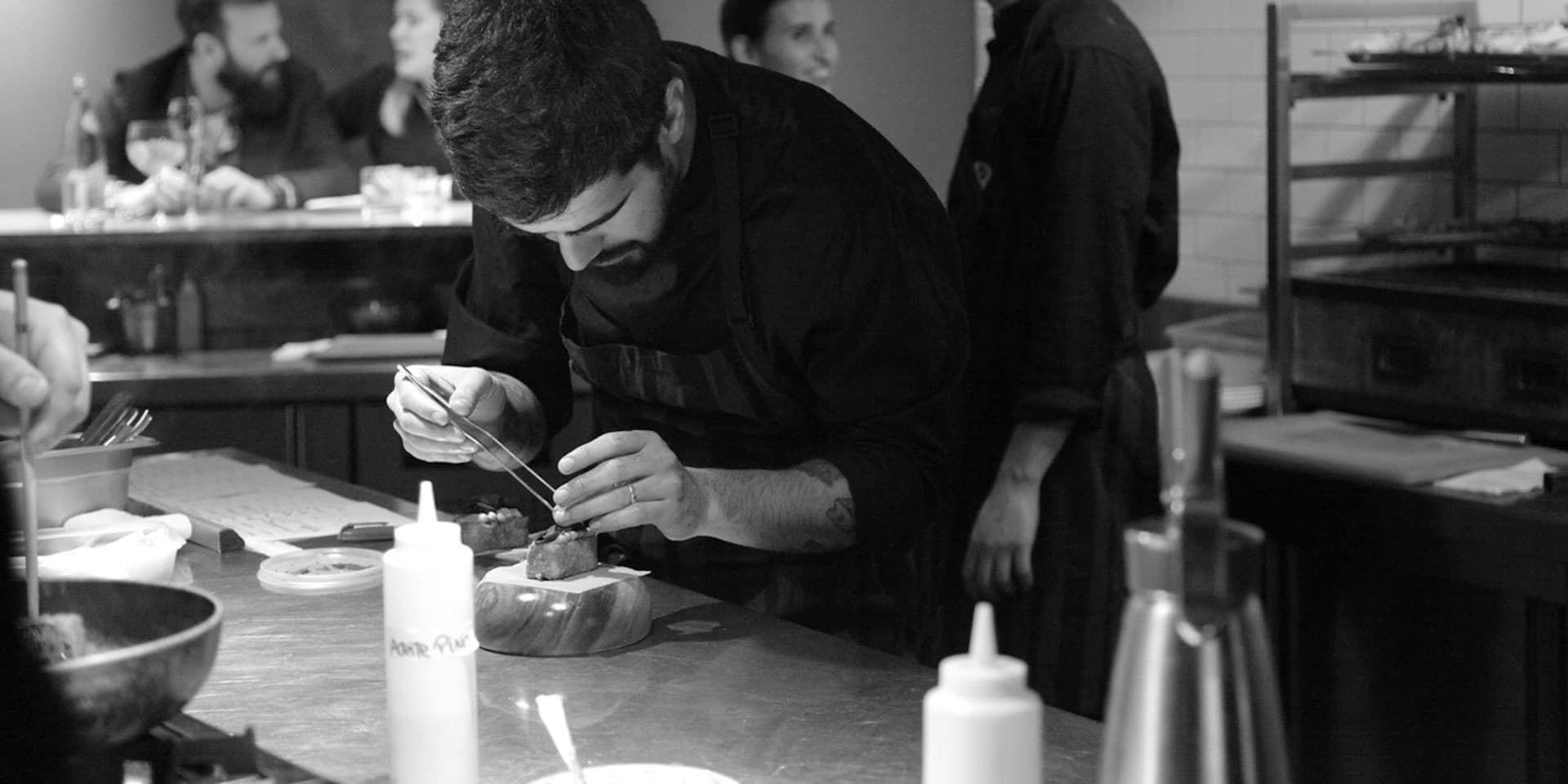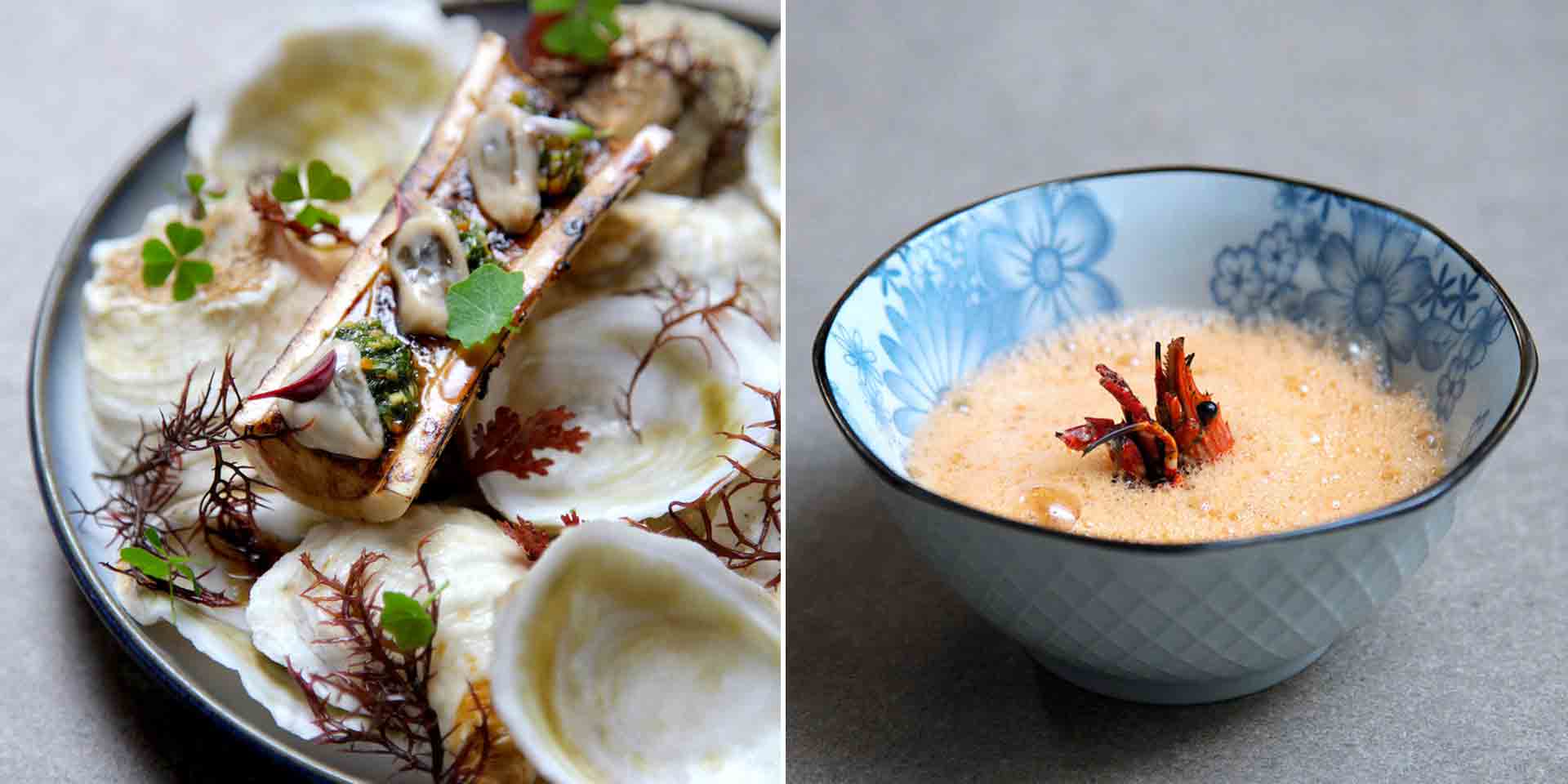Tasting menus, an array of small dishes that combine to make a meal, have become fashionable in Santiago. Substantial, wholesome dishes still hold their own, but to experience more dishes, more creativity and more unusual, less commonplace produce, it’s worth trying a few restaurants that offer a tasting menu.
It’s always a good idea to inquire first if you have any special dietary requirements.
Boragó
Start with Boragó, the delightful restaurant run by Rodolfo Guzmán, which year after year is awarded the accolade of being the best in Chile. In 2018, it placed fourth in the “50 Best Restaurants in Latin America” competition.
Its open kitchen means that you can watch as the plates are prepared —the kitchen team is so coordinated that it sometimes sometimes it looks as if they are dancing. They serve food (to avoid the word ‘plates,’ as many kinds of serving methods are used, even rocks) that’s predominantly experimental, with flavors of the sea and the forest.
One of the better-known dishes includes a mini-rainforest with a lagoon made of a delicious broth, with an edible full moon reflected in it. Exclusively Chilean ingredients, such as the chañar and maqui plants, may feature in the dishes, as well as ingredients gathered by local foragers who, for example, pick the “fruit” of the doca (a succulent), or salicornio (sea asparagus), another coastal succulent.
Peumayén
The menu at Peumayén, located in the busy Santiago district of Barrio Bellavista, says it serves “ancestral food.” The chef is Argentinean Juan Manuel Pena, who has lived in Chile for many years. In his youth, he went backpacking and paid for his lodgings by cooking for his hosts.
At Peumayén, he promises (and delivers) food from northern, central, and southern Chile, with traditional dishes and unusual ingredients (such as guanaco, or llama, meat). The meal starts with a “bread basket” containing “breads” such as milcao (a kind of potato fritter made with chicharrón, or lard) from Chiloé, and po’e, made with bananas and originating from Easter Island. The tasting menu consists of six small dishes that take you on a journey through Chile.
De Patio

De Patio, a restaurant in the affluent Santiago district of Vitacura, also offers two tasting menus: the “depatio,” with 8 dishes, and the “festival,” with 12.
The dishes are ingenious – a couple of mouthfuls at most-, some with foam, often crispy, beautifully presented and including ingredients such as microgreens and seaweed for a touch of freshness. As with all restaurants offering tasting menus, the dishes at De Patio are predominantly seasonal.
99
Perhaps responsible for setting the trend in Santiago of naming restaurants after their street number, the wonderful 99 also appears on the 2018 list of the best restaurants in Latin America, coming in at 28th place. At lunchtime, it offers a tasting menu of six or nine dishes.
The restaurant is run by the chef Kurt Schmidt, who also worked at the famous Noma, as well as at Boragó, and its dishes not only contain Chilean ingredients, but are also presented on Chilean materials. These include bowls made of a local wood, raulí, and a copper butter dish. Make sure you leave room for dessert, though, as the pastry chef Gustavo Sáez was named Latin America’s best pastry chef in 2017.
040
Sergio Barroso, a Spaniard who has been living in Chile for some time now, helms this restaurant, which is located in the basement of a hotel in Bellavista. 040 is known for its experimental dishes, with sea snails and picorocos (giant barnacles), as well as other surprising ingredients and combinations.
Every dish is skillfully constructed and uniquely presented. The tasting menus consist of 10 or 12 dishes. Barroso used to work at elBullí, but this project in Santiago is truly special. Drinks at the Room 09 rooftop speakeasy are also unique, with local ingredients and spirits.




